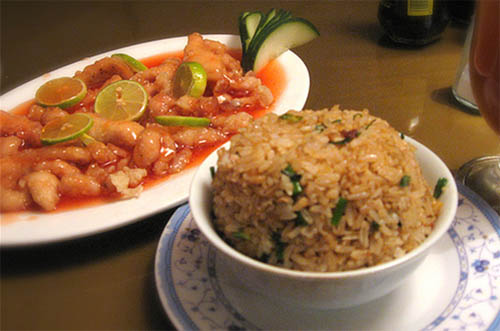With its mix of influences, Spanish, Japanese, Chinese and African cuisine of Peru is now considered one of the richest in the world.
West and East in the same plate, this is one the most defining features of Peruvian cuisine, more valued in the world and has come to stay.
With a number of flavors, traditions and ingredients almost infinite (if we ignore Wikipedia is the most typical dishes has: 491) has much to offer, and in Spain seems to us very clear. The Inca, La Gorda (chosen by Vargas Llosa when in the capital to ward off homesickness cuisine) or the more luxurious Astrid & Gaston (the renowned chef Gaston Acurio) are among the restaurants offering cuisine in Madrid on Peru.
A plate of ceviche prepared in the restaurant Astrid y Gaston.
Corn, potato and meat and other wild animals called defined Andean cuisine
And the capital is not the only, all Spain has good suggestions for this meal: in Bilbao you can go to Chili Colorado, in the old, and Barcelona is full of good references, such as Peru or The Lordship of Mochica-and proposals can be found as original as the Komomoto, a pub that combines the best from Japan and Peru in their dishes.
Corn, potatoes and meat and other wild animals called defined Andean cuisine, fish and shellfish are more typical of the coastal zone, where they are also some of the sweets of more than 200 desserts (until rice Milk is of them) available to this cuisine, and the typical chili chicken, and finally, the fruits, herbs and meats of the jungle, as camu camu (a fruit with more vitamin C), mango, pineapple or water hole.
Regions aside, there are some dishes that have been crossing borders while still enjoying great popularity at home. Ceviche is the case of (declared National Cultural Heritage by the Peruvian government, like the pisco). Made with fish (any kind) into pieces, lime juice, red onion, pepper and salt, is one of the most attractive claims of Peruvian cuisine. Is also made with shellfish and algae.
Another great popular dishes is the grilled chicken, which has a curious history: it was installed in Peru two Swiss who invented and registered the patent in 1950 for the machine to cook this chicken. The cause is another dish essential Lima : layers of mashed potatoes with lemon and yellow peppers, stuffed poultry, seafood or avocado and tomato. And the fusion dish of China-Peru: chaufa rice (cooked with chunks of chicken and pork, and green onion soy sauce).
All this, of course, accompanied by a rich, fresh and cheerful pisco, the national drink. This liquor from grapes, offers four types: pure green must, acholado and aromatic. The best known in Spain is the pisco sour, made with pisco and lime base, but more cocktails made with this drink, as the punch of the liberators, the pisco punch, and chilcano of pisco.
A little history

Conventional wisdom and skill of many generations of Peruvians, mainly from Spain, China, Japan, Italy and Africa have synthesized a cuisine that exudes imagination and optimization of resources. The lack of many of the original recipe ingredients forced migrants to develop new dishes reinventing their countries of origin. Thus, the Eastern influence can be perceived clearly in dishes like tiradito, a tasty incoming raw fish with hot sauce. The Spanish heritage, specifically Catalan is evident in one of the most popular sandwiches, the sausage, made with white bread, ham Peruvian onions, chillies, lime and pepper.
Sweets and desserts are direct descendants of the Spanish confectionery
Special mention should be 'Chinese food'. This word, evolution of the Chinese term that means "eat rice" refers to the Peruvian food from the giant yellow with local modifications. The reasons for success: a mix of flavors suitable for all palates. Typical of this variety culinary recipes are rice and fried noodles, the lomo saltado (marinated and served with soy sauce), soy fried chiken or guinea chick (based on guinea pig meat).

Sweets and desserts, pastries direct descendants of the Spanish, are adapted versions of nougat, gingerbread, the fritters or tiles. More typical is the only Peruvian porridge: a sweet purple corn-based, cinnamon and spices.
A Peru will not lack anything, and plenty of imagination, color, culture, tradition and desire to make cooking an art. However, not many were able, years ago, to anticipate the flowering and recognition that this food would reach the world. An unstoppable phenomenon. Some say the taste buds love this food.
Heritage of the Americas
It was late last century when the cuisine really began to see the world. The year was 2006 when, at the fair Madrid Fusion, Lima was declared America's gastronomic capital. One of the last awards he has received has been last March, when the Organization of American States (OAS) gave the award to Peru Cultural Heritage of the Americas for its ability to fuse flavors from around the world.

